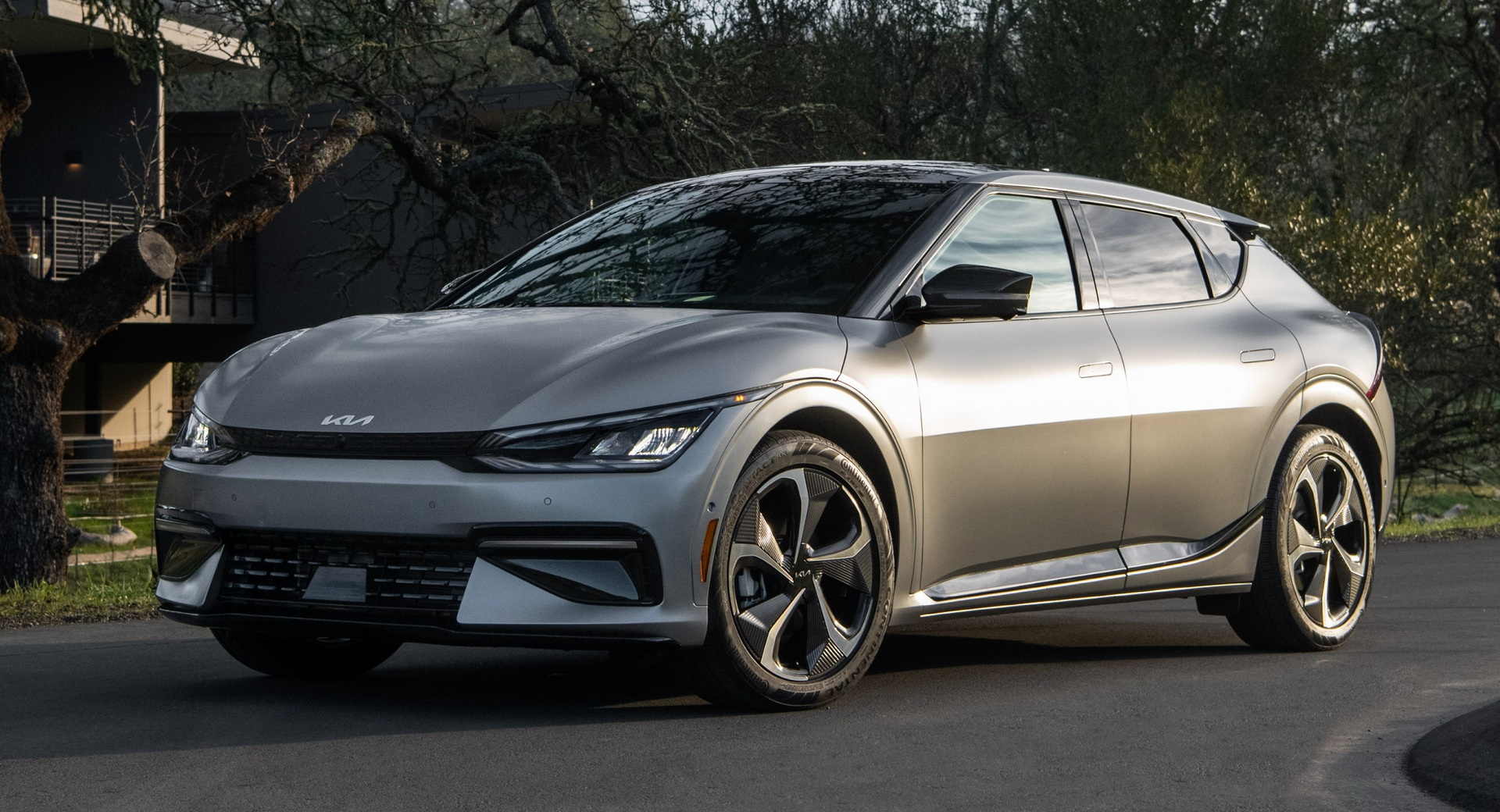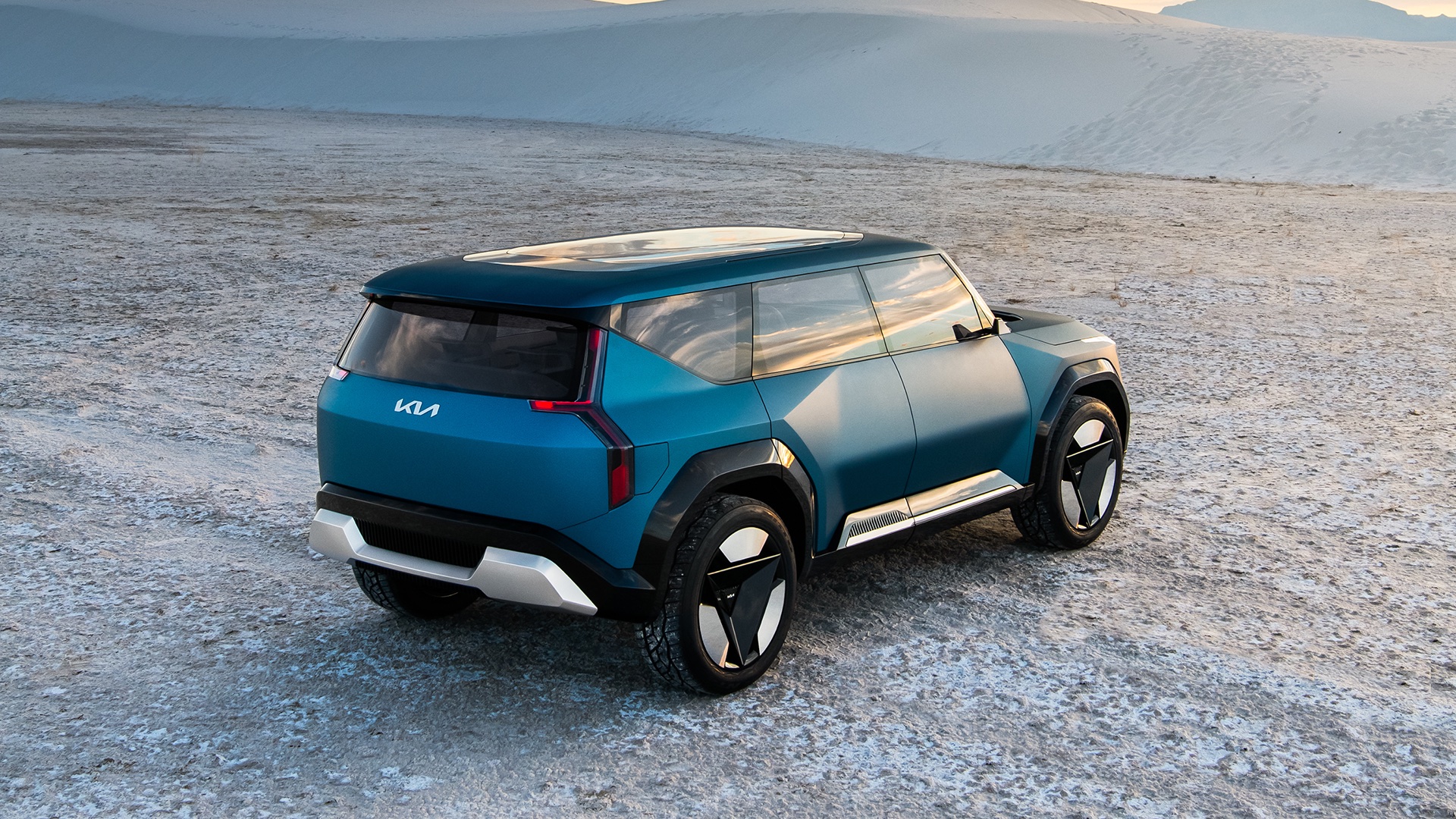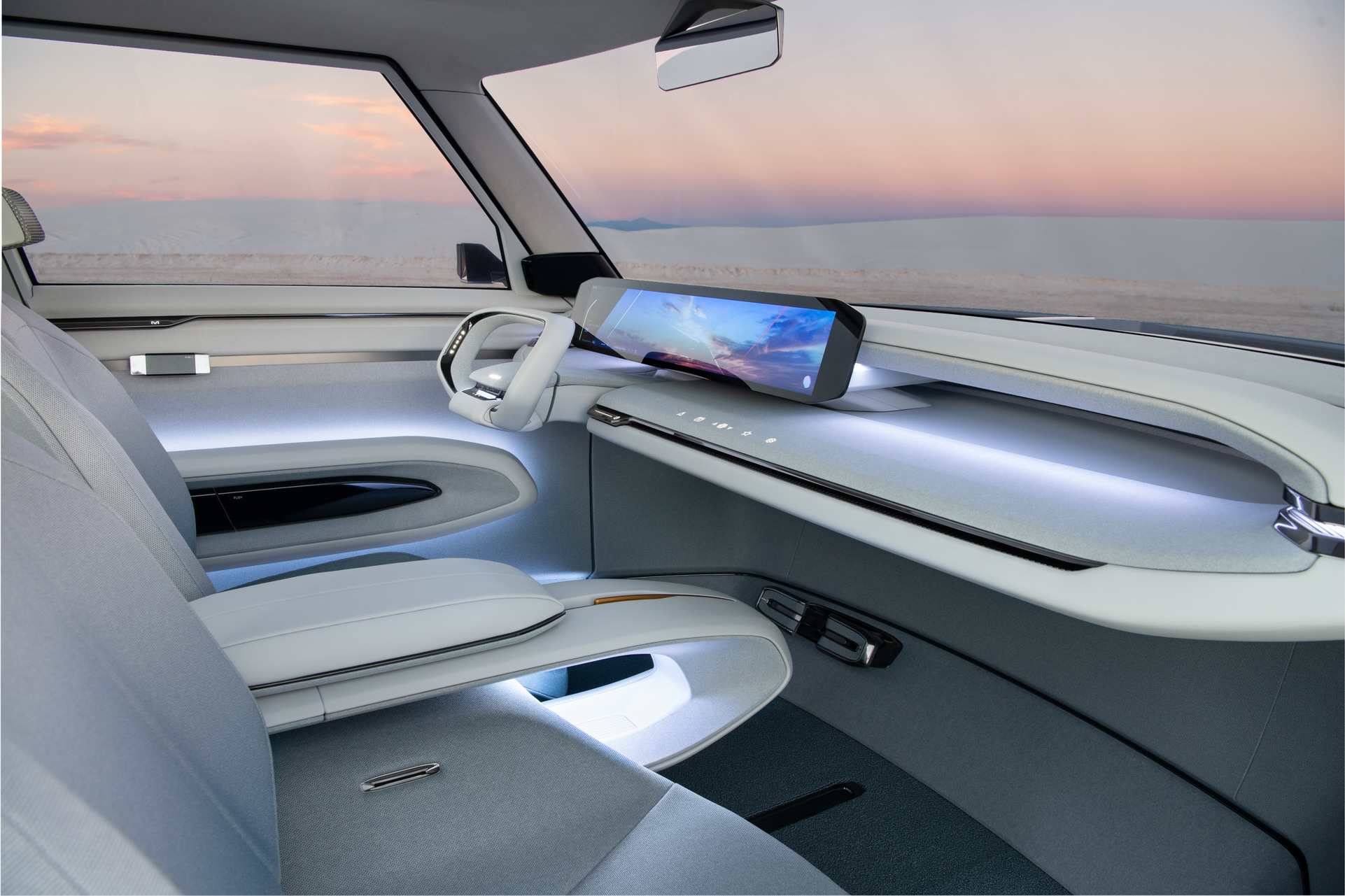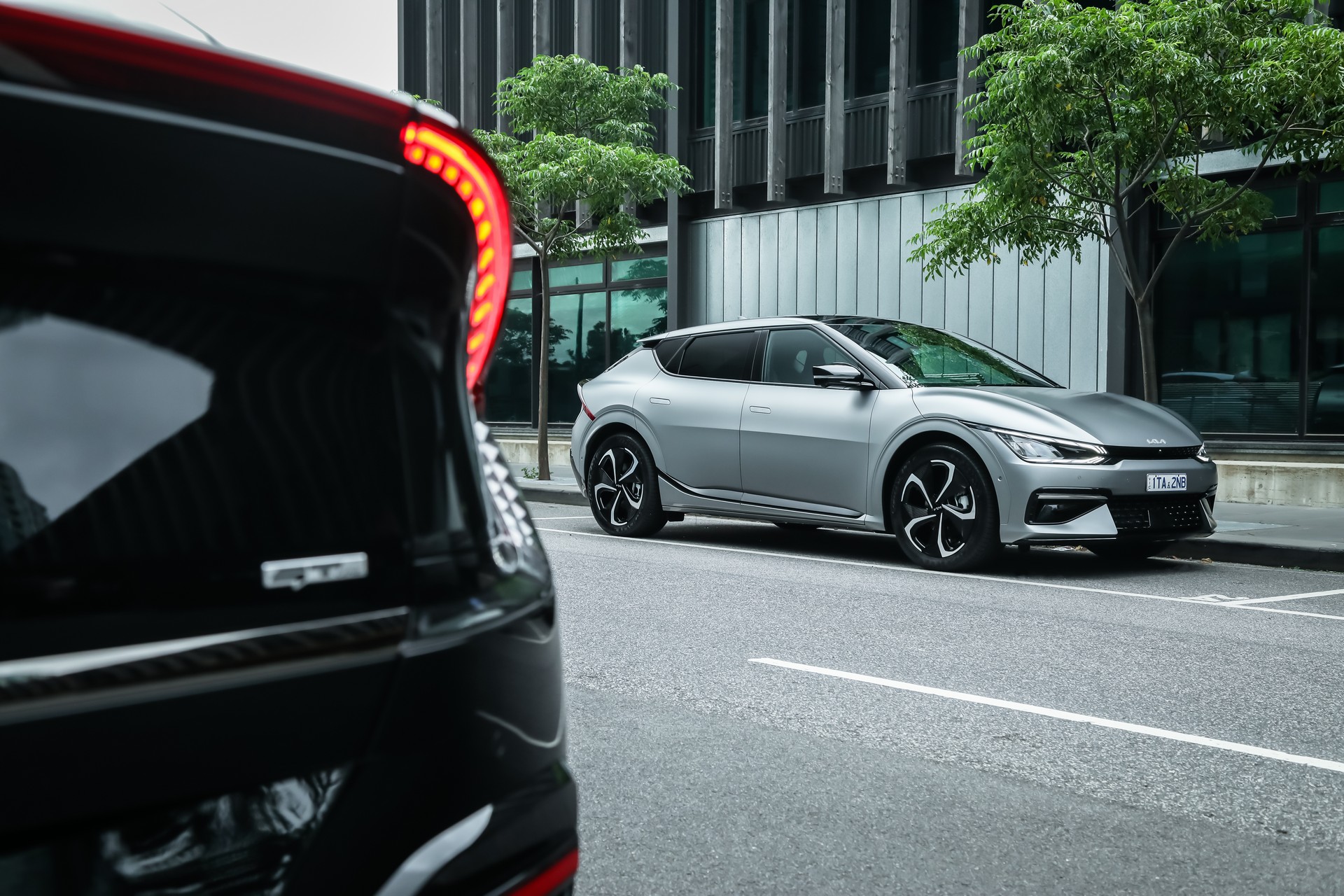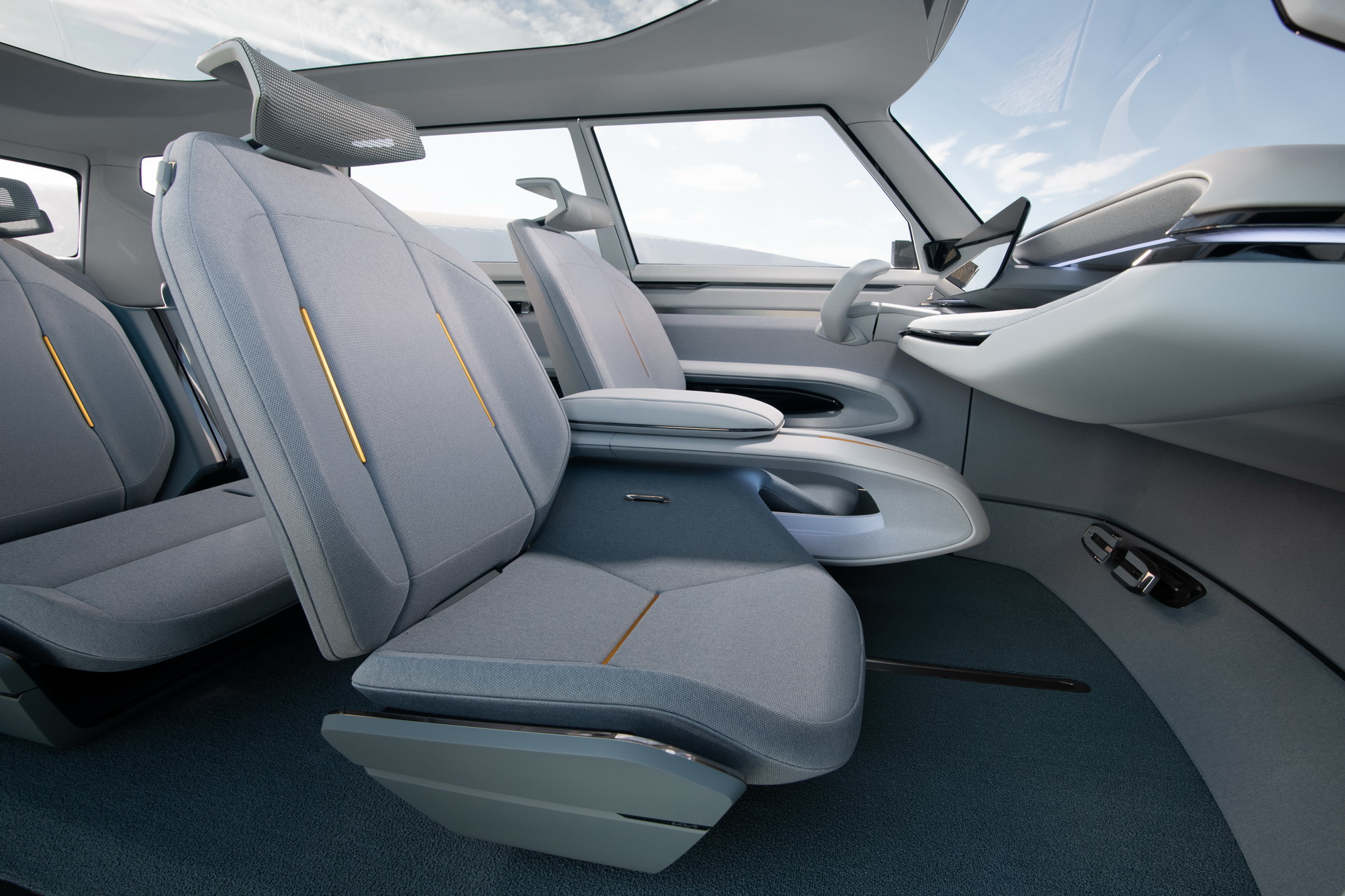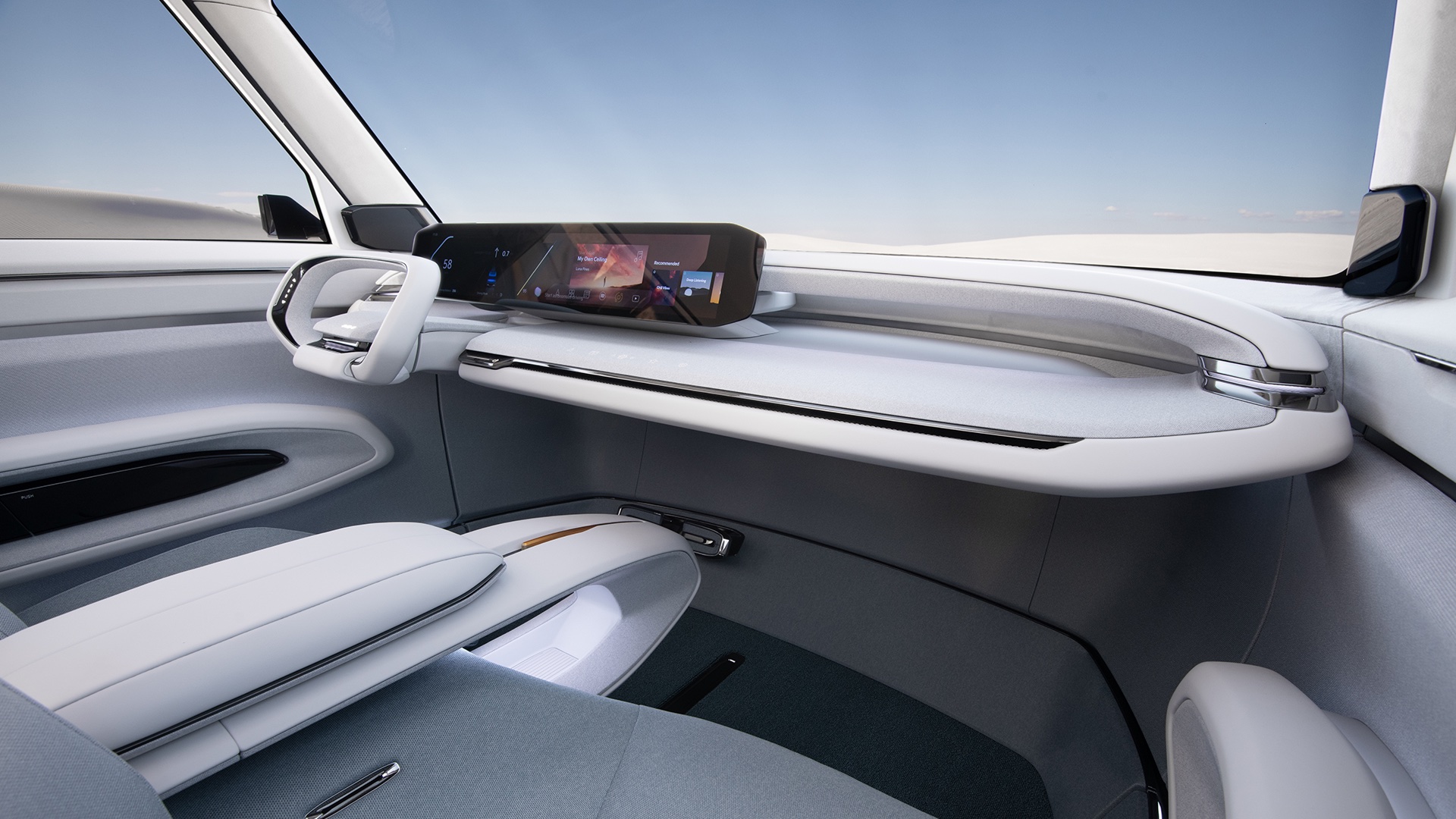A day after Hyundai and Genesis presented their EV strategy during the 2022 CEO Investor Day, Kia announced its future plans that include offering a range of 14 BEVs by 2027. The Korean brand is targeting 4 million annual sales globally by 2030, with half of them being eco-friendly, including 1.2 million BEVs. Kia also wants to become the number one brand globally in the purpose-built vehicle (PBV) market by 2030.
The new roadmap is an evolution of Kia’s “Plan S” strategy announced in 2020, with even more ambitious targets. The goal is to become a “sustainable mobility solutions provider”, focusing on three key pillars: people, planet, and profit. To that end, over the next five years it will invest 28 trillion won ($23.2 billion).
14 BEVs Including Two Pickups And An Entry-Level Model
Kia will be launching at least two new BEVs per year in order to have a full range of 14 BEVs by 2027. This is up from the previous target of 11 BEVs by 2026. Among the new models, Kia confirmed two electric pickup trucks – a “dedicated pickup” and a “strategic model for emerging markets”. It has also confirmed an entry-level BEV without specifying the segment.
Read Also: The 2022 Kia EV6 Is The New EV Benchmark
The aforementioned models will join the existing EV6 and the already confirmed EV9, alongside a number of yet unnamed electric sedans, hatchbacks, and SUVs that have been teased. Another important announcement is the expansion of performance-focused GT versions to the entire range of electric vehicles following the EV6 GT.
Finally, the first dedicated purpose-built vehicle (PBV) – likely a medium-sized electric shuttle with autonomous driving capabilities – will be unveiled in 2025 based on a flexible skateboard EV platform. Before that, Kia will introduce a PBV version of the Niro called Niro Plus in 2022 that’s designed for taxi and car-hailing services. Kia plans to become a market leader in PBVs, answering the increased demand in delivery and logistics services.
New Info On The Upcoming Kia EV9
The Kia EV9, a large electric SUV set to launch in 2023 after being previewed by a concept with the same name in 2021, will be a very important model for the brand incorporating the latest tech. Kia confirmed that the EV9 will introduce its new autonomous driving technology called “AutoMode” including a Highway Driving Pilot feature that will allow “driving without driver intervention on highway sections”.
It will also be Kia’s first model to receive over-the-air updates (OTA) and feature-on-demand (FoD) services allowing customers to purchase software functions. The aforementioned connected car features will be expanded to Kia’s entire range by 2025, while the “AutoMode” technology will be available to all models in major markets by 2026.
In terms of specifications, the EV9 will measure around 5 meters (196.8 inches) in length which is close to the 4,930 mm (194 inches) long concept. While the company didn’t specify the number or the type of electric motors, it confirmed they will offer a 0-100 km/h (0-62 mph) acceleration in 5 seconds. The large battery will offer a range of 540 km (336 miles), with ultra-fast charging capability adding 100 km (62 miles) of range in six minutes.
New Sales Targets And Higher Profit Margins
The 4-million annual sales target for 2030 is 27 percent higher than the 3.15-million target for 2022. The share of eco-friendly vehicles (BEVs, PHEVs, and HEVs) in global sales is set to grow from 17 percent in 2022 to 52 percent in 2030. In major markets like Korea, North America, Europe, and China with strict emission regulations and a growing demand for EVs, eco-friendly vehicles share will be as high as 78 percent of total sales.
Specifically for BEVs, annual sales are expected to grow from 160,000 units in 2022, to 807,000 units in 2026, eventually hitting the 1.2 million annual sales target in 2030 which is 36 percent higher than the previous goal. The majority of BEV sales (80 percent) will come from Korea, North America, Europe, and China, where 45 percent of new Kia models sold will be electric.
In terms of financial targets, Kia wants to achieve a gross revenue of 120 trillion won ($99,4 billion) by 2026, with an operating profit margin of 8.3 percent. This is on par with the 8 percent operating profit margin of Hyundai/Genesis for 2025 which is set to grow to 10 percent by 2030. Kia is also sharing the same target with the rest of Hyundai Motor Group in terms of achieving carbon neutrality by 2045.
Korea will keep being Kia’s main hub for research, development, production, and supply of EVs, although plants in other regions will also contribute in production. More specifically Kia will start producing small and medium-sized EVs in Europe from 2025, mid-sized SUVs and pickups in the United States from 2024, and entry-level and mid-size EVs in India from 2025. From 2023, it will introduce mid-size EVs in China.
Kia’s demand for batteries will grow from 13 GWh today to 119 GWh in 2030 due to the significantly increased production of EVs. The company will be sourcing batteries from Indonesian joint ventures and other global partners. Kia wants to achieve 50 percent increased battery density and 40 percent lower costs by 2030.





